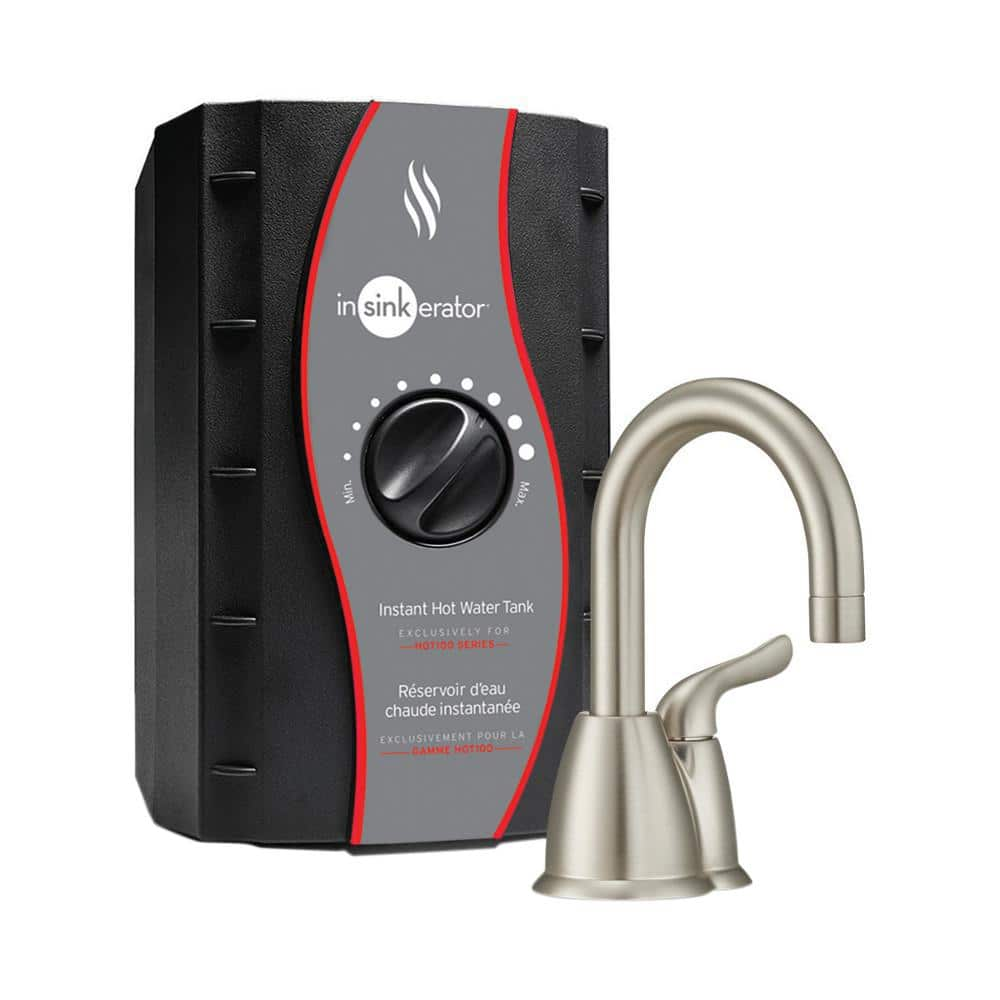InSinkErator Invite HOT150 Series Instant Hot Water Dispenser Tank with 1-Handle 6.25 in. Faucet in Satin Nickel
2/3 Gal. Tank with Adjustable Temperature (160°F – 210°F). Included Non-Swivel Satin Nickel Faucet Fits Standard Faucet Hole.
The InSinkErator HOT150 Instant Hot Water Dispensing System is the newest and affordable addition to the Invite series. Features an easy handle actuation technology faucet and 2/3 Gal. stainless steel tank that delivers up to 60-cups per hour of near-boiling water. Modern design in a Satin Nickel finish that complements today’s popular kitchen faucet styles.
- UL Certified Hot Water Tank with durable, stainless-steel construction delivers up to 60 cups of near-boiling water per hour
- Includes an all metal, non-swivel, single-handle faucet in a sleek Satin Nickel finish
- Tool-free tank connections and dry-start protection for easy DIY installation
- Easily adjustable temperature control from 160°F up to 210°F
- Simple handle actuation
- Backed by InSinkErator’s 1-Year “We Come to You” Limited Service Warranty Covers Repair or Replacement by an Authorized Dealer
- Fixed, non-swivel spout
Additional information
| Connection size (in.) | 1/4 In. |
|---|---|
| Faucet Height (in.) | 6.25 |
| Spout Height (in.) | 6.25 |
| Certifications and Listings | UL Certified |
| Manufacturer Warranty | 1-year parts and in-home service |






by Brad
Works as advertised. Instant hot water instead of wasting water waiting for hot water to reach the faucet.
by Alamo
Hot water on demand. This is not a durable system thiugh
by Steve
Exactly what we ordered and installed just fine.